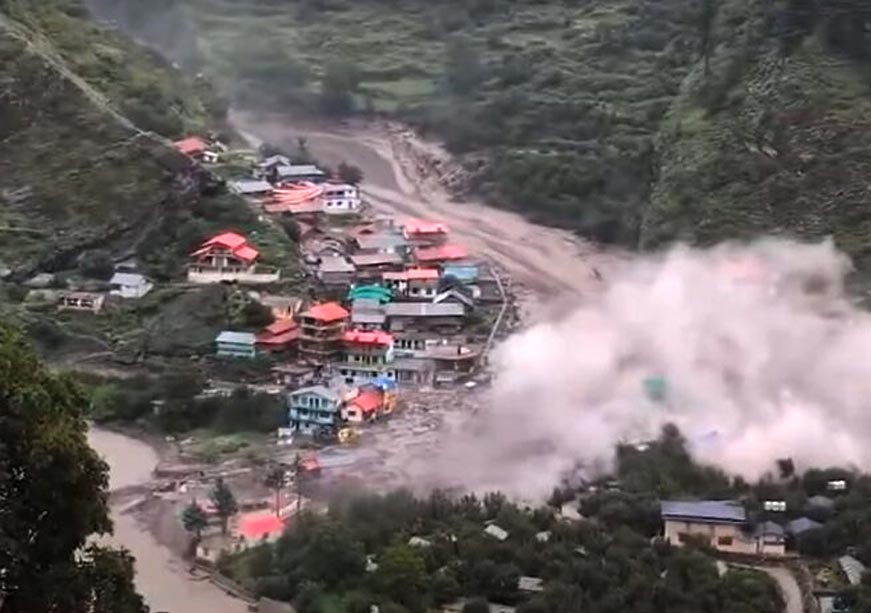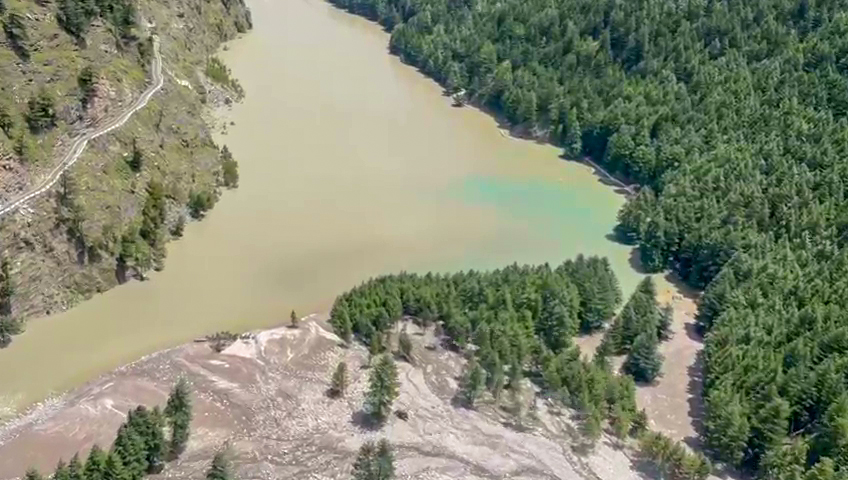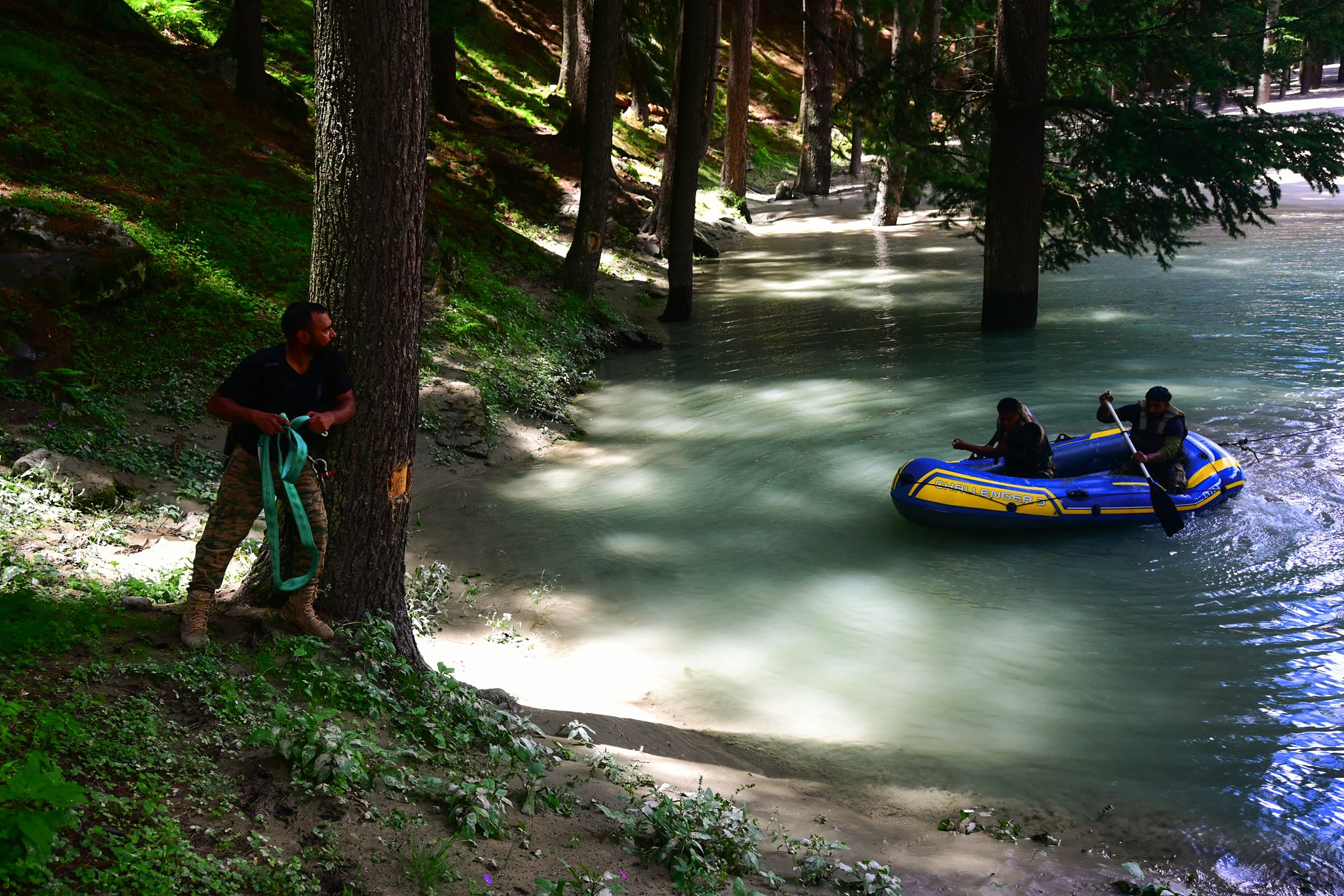-
CENTRES
Progammes & Centres
Location
From Kedarnath in 2013 to Chamoli in 2021, the Himalayan belt has seen disasters arrive with unsettling frequency, each more devastating than the last.

The recent flash floods in Uttarkashi are a stark reminder of the Himalayas' growing vulnerability to the twin forces of climate change and unregulated development. On 5 August 2025, a cloudburst in the upper catchment of the Kheer Ganga river unleashed a torrent of water and debris into Dharali village, sweeping away homes, hotels, and shops, killing at least four and leaving nearly a hundred people missing. Roads connecting Harsil Valley collapsed, stranding entire communities and halting rescue operations.
But Uttarkashi is not alone. From Kedarnath in 2013 to Chamoli in 2021, the Himalayan belt has seen disasters arrive with unsettling frequency, each more devastating than the last. What is striking is not that these disasters are happening, but that they are happening in exactly the same way — triggered by extreme rainfall or glacial activity, magnified by fragile ecosystems, and made catastrophic by unchecked construction in ecologically sensitive zones. Unless India urgently integrates climate concerns into its mountain development agenda, the Himalayas will continue to lurch from one tragedy to another.

Extreme rainfall events are no longer anomalies for the Himalayan states. A Nature Communications study shows that India has seen a threefold increase in such events between 1901 and 2015, with Uttarakhand among the hardest hit. Climate scientists warn that a warming Arabian Sea is fuelling more moisture-laden monsoon winds, which are now colliding with Himalayan topography to produce short bursts of intense rainfall. The Himalayas themselves are warming twice as fast as the global average, accelerating glacial melt and destabilising slopes. The compound effect of heavier rainfall and rapid melting is a recipe for frequent landslides, floods, and glacial lake outburst floods.
Yet, instead of responding with caution, the region has doubled down on infrastructure-led growth. Uttarkashi lies within the Bhagirathi Eco-Sensitive Zone (ESZ), a 4,157 sq. km area notified in 2012 to protect fragile ecosystems. The ESZ mandates strict restrictions on heavy construction, mining, and activities that alter natural drainage. In practice, however, the rules have been flouted with impunity. Multi-storey hotels and restaurants mushroom on riverbanks, roads are cut through unstable slopes, and hydropower projects continue to be planned despite repeated expert warnings. The Dharali flood has once again exposed how commercial interests and short-term gains override ecological safety, turning extreme weather into disasters.

The economic and human costs are staggering. The 2013 Kedarnath floods killed over 6,000 people and caused damages exceeding ₹7,000 crore, much of it due to infrastructure destruction. The 2021 Chamoli glacier disaster wiped out two hydropower projects, killing over 200 workers and causing damages estimated at ₹1,500 crore. In Uttarkashi, the toll is still being assessed, but the destruction of roads, hotels, and homes in Dharali underscores the fragile returns of investing in high-risk zones. According to the World Bank, climate-related disasters already cost India an estimated $87 billion annually—a figure that will rise sharply unless mountain development shifts course.
India’s policy architecture has failed to internalise these risks. The National Action Plan on Climate Change (NAPCC) and state-level climate action plans emphasise adaptation, yet their incorporation into development projects has been largely perfunctory. Infrastructure projects in Uttarakhand often rely on outdated environmental impact assessments that do not account for new climate realities. Moreover, disaster management remains reactive—focused on post-event relief and reconstruction—rather than preventive, which would mean integrating climate risk assessments into planning, design, and approval stages.

This governance gap must be urgently bridged. First, the ESZ regulations must be strictly enforced, with independent monitoring to ensure that river floodplains and unstable slopes are kept free of permanent structures. Second, every major project—road widening, hydropower, hotels—should undergo climate and geohazard audits that map risks from extreme rainfall, landslides, and glacial melt. These should be mandatory and publicly disclosed, not treated as compliance checkboxes.
Equally critical is investment in risk forecasting and early warning systems. The Indian Meteorological Department’s (IMD) Doppler radar coverage in the Himalayas is still sparse. Expanding radar networks, deploying real-time river sensors, and building last-mile communication systems would save lives by providing communities with vital lead time. Institutions such as ISRO and the National Remote Sensing Centre have the capacity to generate high-resolution risk maps, but these need to be mainstreamed into local planning, not confined to academic reports.
Community resilience must be at the heart of this shift. In Uttarkashi, vulnerable villages often find themselves in high-exposure zones along streams and slopes. Studies show that relocation, though politically difficult, is essential to reduce repeated losses. Compensation packages and livelihood alternatives should be designed with community participation to ensure social acceptance. Local knowledge — such as traditional housing techniques and water management practices—must be preserved and integrated with modern risk assessments.
Finally, the private sector cannot remain on the sidelines. Tourism is both a driver of Uttarakhand’s economy and a contributor to its vulnerabilities. Hotels and resorts benefit from the fragile beauty of the Himalayas but rarely invest in its protection. Models of public-private partnerships in climate-resilient infrastructure, sustainable tourism, and disaster preparedness could help balance economic activity with ecological preservation. The World Economic Forum notes that every $1 invested in resilience saves $4 in disaster recovery costs—a logic that should drive private sector engagement.
The Uttarkashi floods are not just a local tragedy; they are a national warning. They highlight the cost of ignoring ecological science, of prioritising short-term development over long-term resilience, and of treating climate change as an abstract future problem rather than a present and intensifying reality. Unless India reorients its mountain development model, the Himalayas will continue to witness disasters that are both predictable and preventable.
The choice before policymakers is stark. Continue down the current path and watch each monsoon turn into a season of mourning—or act decisively to embed climate resilience into every aspect of Himalayan development. The lives lost in Dharali should compel us toward the latter.
This commentary originally appeared in Etv Bharat.
The views expressed above belong to the author(s). ORF research and analyses now available on Telegram! Click here to access our curated content — blogs, longforms and interviews.

Aparna Roy is a Fellow and Lead Climate Change and Energy at the Centre for New Economic Diplomacy (CNED). Aparna's primary research focus is on ...
Read More +